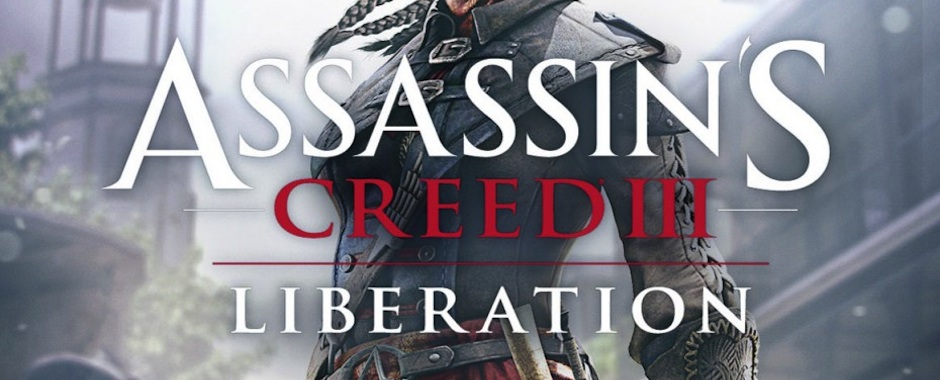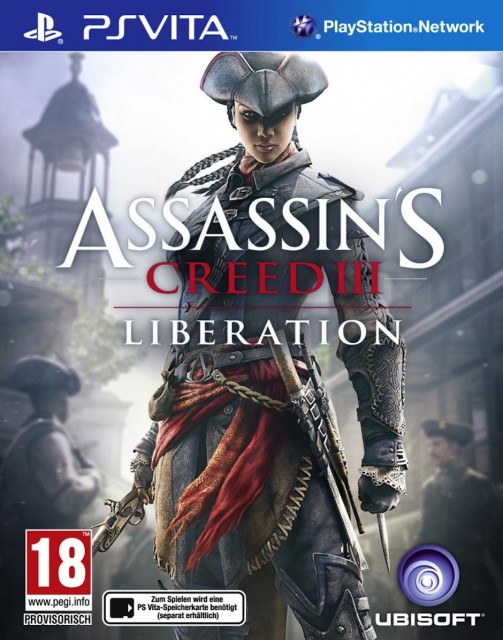Assassin’s Creed has never been on a portable console before. Now, we realize that Altair’s Chronicles, Bloodlines, as well as Discovery were made specifically for the Nintendo DS and PlayStation Portable, but let’s be honest: those were not real entries in the franchise.
 With Sony’s PlayStation Vita and the massive power of the system, however, we can finally say that a true portable entry in the Assassin’s Creed stable has been released, and it’s called Liberation.
With Sony’s PlayStation Vita and the massive power of the system, however, we can finally say that a true portable entry in the Assassin’s Creed stable has been released, and it’s called Liberation.
Liberation is very much worth of the Assassin’s Creed moniker. But with that statement comes a few caveats if you’re a fan of the series. Taking place during a similar time period as Assassin’s Creed III (our review is forthcoming), Liberation puts you for the first time, in the hands of a female protagonist, Aveline de Grandpré.
Unfortunately, the story is broken up into sections that feel a bit contrived in many parts. As Aveline, you get to play as one of three personas to progress through the game. You can be the lady, using your charm to outwit enemies and convince others to do as you please. You can be the assassin who excels at speed and of course, combat and defense. Or, you can be the slave who is weaker in combat but certainly has her wits about her and can make her way through the town undetected, so long as she carries on with some menial tasks when a group of guards meander by.
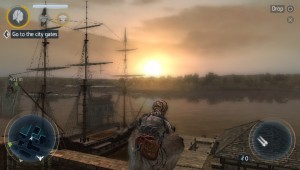 But while you can choose to change your persona at any time, most missions force you into using only one for that specific mission. The depth of Liberation would have been exponentially expanded if you could choose any persona for any mission, varying the way you complete its objective depending on the persona you choose. Sure, it might be more difficult to charm the ship’s captain as a slave, but wouldn’t it be incredible if there was another way to get the information you needed?
But while you can choose to change your persona at any time, most missions force you into using only one for that specific mission. The depth of Liberation would have been exponentially expanded if you could choose any persona for any mission, varying the way you complete its objective depending on the persona you choose. Sure, it might be more difficult to charm the ship’s captain as a slave, but wouldn’t it be incredible if there was another way to get the information you needed?
This is just the beginning of some story oddities. At one point, you wake up from a nightmare as scared as a child with monsters under her bed, only to get dressed as an assassin and kill people in the night. Little threads don’t unravel like this too often – or maybe we just didn’t catch them – but they do take you out of the believability of the situation when they crop up.
Still, despite some of these issues, there is a real intensity to the story. Within the first five minutes of Liberation, you see Aveline as a teenager, brutally assaulted by a group of grown men. You’re forced to fight your way out in a stunning display of adrenaline, and we must assume this is where Aveline got her fighting chops. There’s something instantly disgusting about a group of men beating a young woman, and it is an intensity we rarely see in games. Recognition certainly goes to Ubisoft Sofia for pulling it off, especially on a portable title.
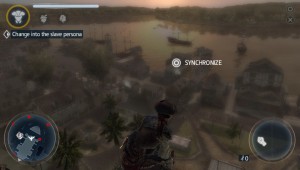 By all accounts, Assassin’s Creed gameplay mechanics are employed in full force here and form the game’s saving graces. Fighting animates are extremely well choreographed and very intense. There are a few collision issues, but that comes with having such fluid, quick movements and only so much screen real estate to show them on.
By all accounts, Assassin’s Creed gameplay mechanics are employed in full force here and form the game’s saving graces. Fighting animates are extremely well choreographed and very intense. There are a few collision issues, but that comes with having such fluid, quick movements and only so much screen real estate to show them on.
The climbing mechanic in Liberation is also stellar, as you might expect from a game that practically wrote the book on fluid animation climbing and jumping in a video game. You can climb up virtually anything, making getaways quick, while traversing the town becomes a breeze. Of course, there are a few issues with climbing up angular roofs and getting around overhangs, but for the most part, Aveline did what we expected her to do. There’s no doubt the Vita’s dual-analog sticks makes this game as easy to control as it is.
It’s important to note that Ubisoft managed to translate these abilities effectively onto a portable console. All too often, developers try to port a franchise with a very unique and specific combat or game mechanic and fail in getting that right, letting the rest of the game fall to the wayside. We’re looking at you, Splinter Cell 3D!
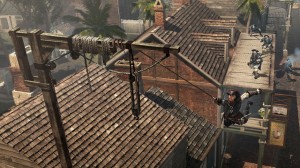 Though climbing controls are exceedingly well refined, there is one bizarre control choice at play. There is very little use of the touchscreen in game at all, with the exception of a few puzzles. For the most part, the touchscreen serves as a menu control and, together with the rear-touch pad, gathers dust for the majority of the campaign itself.
Though climbing controls are exceedingly well refined, there is one bizarre control choice at play. There is very little use of the touchscreen in game at all, with the exception of a few puzzles. For the most part, the touchscreen serves as a menu control and, together with the rear-touch pad, gathers dust for the majority of the campaign itself.
Graphics overall are as you might expect on a portable console. The Vita’s power is shown off in the incredible draw distance of Liberation, although the game’s world is not nearly as big as we think it could be. With that said, the graphics the game is pumping out are spectacular, if just a tad unrefined. The worst thing we really noticed was some aliasing around the character as we panned through the environment, but when running through the game (which you’ll be doing a lot), we barely noticed a thing. Colours are a bit washed out and on the browner side of the scale, but that probably has more to do with the time period of the game than the lack of colour put into it by the developers.
Overall, Assassin’s Creed III: Liberation is very much a game whose series it belongs to. Ubisoft has done very well with this entry in their franchise, and opened up a great world for people to explore. It’s got some load-time issues, but makes up for it with a great auto-save system. Liberation isn’t the best Vita game, nor the best Assassin’s Creed title, but it is definitely worthy of play if you know what an Animus is.

